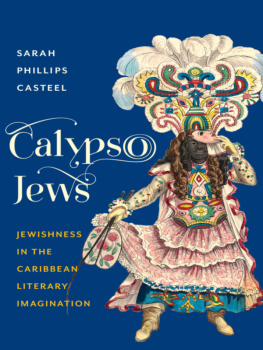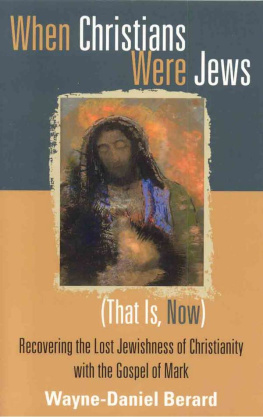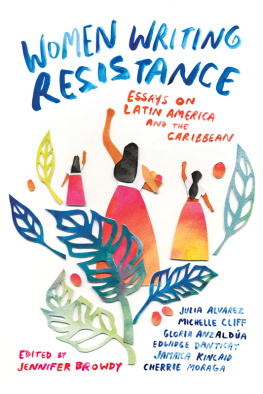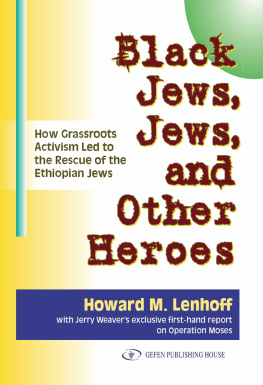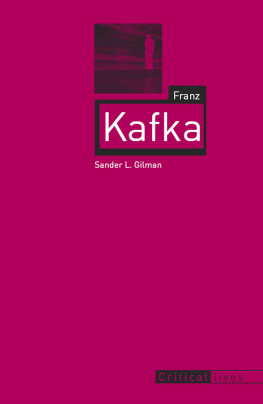CALYPSO JEWS

LITERATURE NOW
LITERATURE NOW
MATTHEW HART, DAVID JAMES, AND REBECCA L. WALKOWITZ, SERIES EDITORS
Literature Now offers a distinct vision of late-twentieth- and early-twenty-first-century literary culture. Addressing contemporary literature and the ways we understand its meaning, the series includes books that are comparative and transnational in scope as well as those that focus on national and regional literary cultures.
Caren Irr, Toward the Geopolitical Novel: U.S. Fiction in the Twenty-First Century
Heather Houser, Ecosickness in Contemporary U.S. Fiction: Environment and Affect
Mrinalini Chakravorty, In Stereotype: South Asia in the Global Literary Imaginary
Hctor Hoyos, Beyond Bolao: The Global Latin American Novel
Rebecca L. Walkowitz, Born Translated: The Contemporary Novel in an Age of World Literature
Carol Jacobs, Sebalds Vision
SARAH
PHILLIPS
CASTEEL Calypso
Jews JEWISHNESS
IN THE
CARIBBEAN
LITERARY
IMAGINATION | 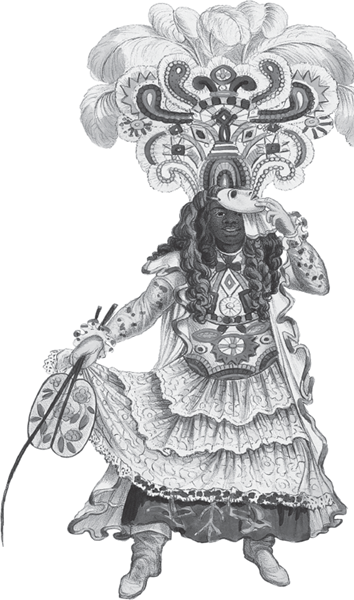 |
COLUMBIA UNIVERSITY PRESS NEW YORK

Columbia University Press
Publishers Since 1893
New York Chichester, West Sussex
cup.columbia.edu
Copyright 2016 Columbia University Press
All rights reserved
E-ISBN 978-0-231-54057-5
Library of Congress Cataloging-in-Publication Data
Casteel, Sarah Phillips, 1974-
Calypso Jews : Jewishness in the Caribbean literary imagination / Sarah Phillips Casteel.
pages cm. (Literature now)
Includes bibliographical references and index.
ISBN 978-0-231-17440-4 (cloth : acid-free paper) ISBN 978-0-231-54057-5 (e-book)
1.Caribbean literature (English)History and criticism. 2.Caribbean literature (French)History and criticism. 3.Jews in literature. 4.JewsCaribbean AreaIdentity. I.Title.
PR9205.05.C39 2016
810.9'9729dc23
2015017753
Cover and book design: Lisa Hamm
Cover image: Isaac Mendes Belisario, Koo, Koo, or Actor-Boy, plate 6, Belisario, I.M. Sketches of character, in illustration of the habits, occupation, and costume of the Negro population, in the island of Jamaica. Kingston: published by the artist, 1837[1838], lithograph, Yale Center for British Art, Paul Mellon collection.
References to websites (URLs) were accurate at the time of writing. Neither the author nor Columbia University Press is responsible for URLs that may have expired or changed since the manuscript was prepared.
A Columbia University Press E-book.
CUP would be pleased to hear about your reading experience with this e-book at .
For James, and in memory of Avie and Harry Phillips
CONTENTS
T his project has brought me into contact with a truly wonderful group of scholars in North America, Europe, and the Caribbean whose work in related areas has greatly enriched my own. I am grateful to Dalia Kandiyoti for her steady encouragement and for her inspiring scholarship and to Rachel Rubinstein and Jennifer Glaser, who showed me how it was possible to do Jewish studies differently. In addition, a number of colleagues offered valuable insights and advice and shared work that helped me to advance the research, including Judah Cohen, Stef Craps, Natalie Zemon Davis, Audra Diptee, Christine Duff, Shai Fierst, Rachel Frankel, Ainsley Cohen Henriques, Aliesha Hosein, Heidi Kaufman, Bndicte Ledent, Tony MacFarlane, Joanna Newman, Jessica Roitman, Allan Ryan, Winfried Siemerling, Hyacinth Simpson, Barry Stiefel, Patrick Taylor, and David Trotman. I also thank Sailaja Sastry, who patiently read parts of the manuscript with her keen editorial eye.
I would like to express my gratitude to Janelle Duke at the National Archives of Trinidad and Tobago, Julie-Marthe Cohen at the Jewish Historical Museum in Amsterdam, and Michele Russel-Capriles, president of the Jewish Cultural Historical Museum of Curaao, for their patient assistance with my queries. Also in Curaao, Gigi Scheper offered an illuminating tour of Jewish heritage sitesthanks as well to Christine and Sarah for tagging along with me to all those cemeteries! In Suriname Cynthia McLeod graciously answered the questions that Ken Victor put to her on my behalf when family commitments prevented me from being there in person. Many thanks to Ken for all of his help.
I owe additional thanks to Anna Ruth Henriques, Caryl Phillips, John Biggins, and NourbeSe Philip for generously allowing me to reproduce artwork, photography, and poetry. The poem St. Claire Avenue West from Salmon Courage by M. NourbeSe Philip is quoted by permission of the author. I also thank Valentine Mitchell for allowing me to reprint in revised form my article Calypso Jews: Holocaust Refugees in the Caribbean Literary Imagination, Holocaust Studies: A Journal of Culture and History 19, no. 2 (Autumn 2013): 126. The calypsos Jews in the West Indies, I Dont Want Any Syrians Again, and The Persecuted Jews are in the public domain.
I am deeply grateful to Tony Kushner, Shirli Gilbert, and James Jordan at the University of Southampton for so warmly welcoming me into their discussions of postcoloniality and Jewishness in Cape Town and London. I also thank the members of the 2011 Posen summer seminar, and especially the organizers Rachel Rubinstein and Naomi Seidman, for their invaluable feedback. My thanks go as well to the participants in a workshop on Sephardic literary studies and comparative methodologies that I co-organized with Dalia Kandiyoti at CUNY in 2012 and to Jane Gerber for sponsoring the workshop. At a late stage in the project, crucial support and encouragement were offered by Bryan Cheyette, Jonathan Freedman, Michael Rothberg, and Rob Nixon, who continues to astonish me with his kindness and generosity.
I was fortunate over the course of writing this book to have the help of several very talented research assistants, Ebony Magnus, Gabrielle Etcheverry, and Sarah Waisvisz, whose enthusiasm and diligence helped me to keep going with the project when my own energy was flagging. I am also grateful to Aliesha Hosein for her help with all matters Trinidadian and to Ebony for sharing with me the story of her Jamaican grandmother, Eleanor Ann Levy, who had difficulty finding an apartment in 1950s Toronto because of her Jewish-sounding surname.
At Carleton I am blessed to be surrounded by warm and supportive colleagues, including Brian Johnson, Julie Murray, Franny Nudelman, and Jan Schroeder among many others. In particular, Ming Tiampo and Catherine Khordoc have offered a rare combination of friendship, intellectual companionship, and professional collaboration that has sustained me over the years. The Centre for Transnational Cultural Analysis and the Migration and Diaspora Studies Initiative at Carleton have provided a vital institutional context for my research. I also thank the dean of the Faculty of Arts and Social Sciences at Carleton, the Government of Ontario, and the Social Sciences and Humanities Research Council of Canada for research awards and other financial assistance that made the completion of this book possible.

